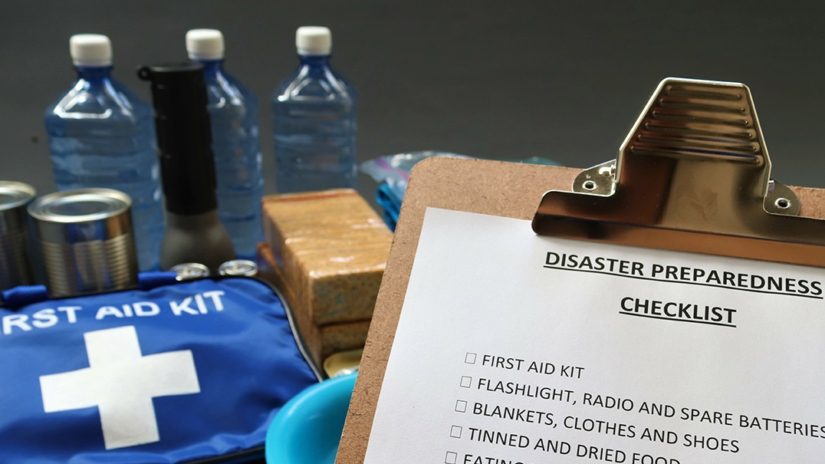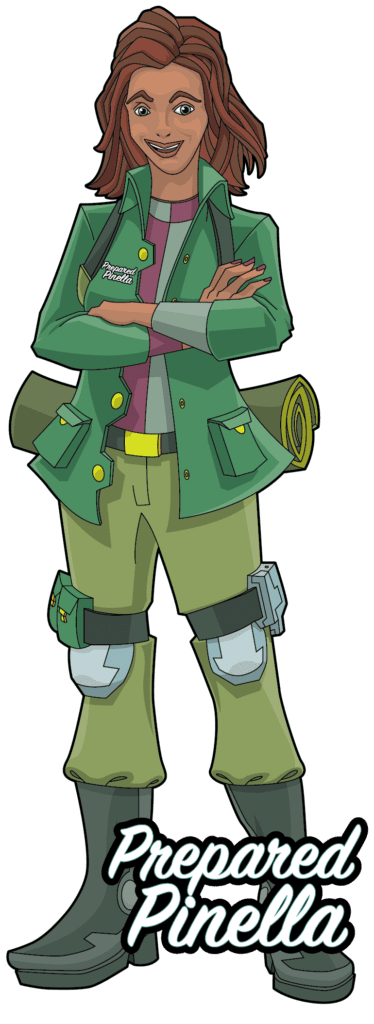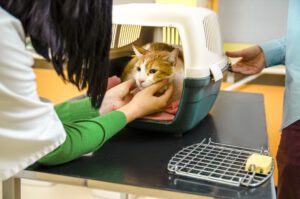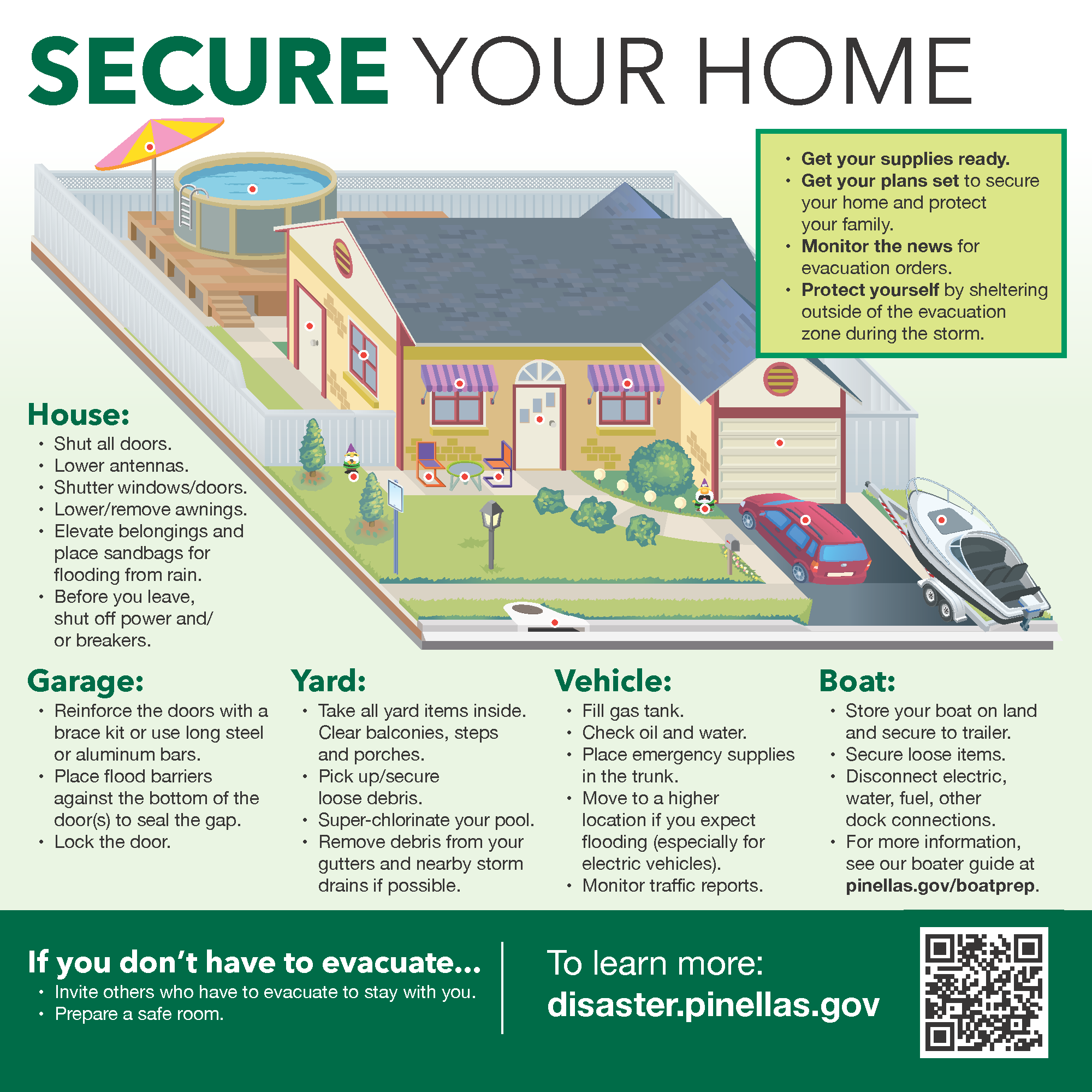Make a Plan

Once you Know Your Risk, you can Make A Plan for how to respond if a hazard is threatening your safety.
Who to Include in Your Plan
Your plan should include everyone in your family—adults, children, people with special needs and pets. You can also include your neighbors, friends or extended family in your plan. If you are interested in helping others prepare for and recover from a disaster, visit our Get Involved page.

Preparing Kids for Disasters
Disasters are scary for everyone, but even more so for kids. There are things you can do to help them prepare and alleviate some of that fear:
- Young children should have a ready-to-go kit with items to keep them busy and give them comfort. Favorite toys or snacks work well.
- Involve older kids in your planning. They can help check supplies or make a shopping list.
- Have family drills on fire, tornado and hurricane safety. Make sure everyone knows where to go if a disaster happens.
Look for resources that are oriented to a young audience such as:
Preparing People with Special Needs
People with special needs should determine if they may need assistance. The following are key considerations:
- Do you use equipment that requires electricity? Make sure you have a backup power source, or plan to go to a location that does.
- Do you have family or friends who can help you make your plan, shelter in place or evacuate? Work with them now to make a plan and assemble the items in your kit. Be sure to include any medical devices, equipment or medications you will need.
- If you need assistance, register for the Special Needs Program. Pinellas County can help with your pet, transportation needs and sheltering.
Preparing for Your Pets
Pets are an important part of your family, and it will be up to you to make a plan for them.

- Make sure animals are up to date on their vaccinations and their county license is valid.
- Microchip your animal in case you get separated, and be sure to update your contact information if it changes.
- Take a photo of you and your pet. Keep it with your important documents and on your phone.
- Build a pet emergency kit.
- If you have to evacuate, take your pets with you. Keep them on a leash or in a carrier.
- Wherever you end up sheltering during a storm or disaster, make sure your destination is pet friendly. You can find locations of pet-friendly public shelters.
Visitors Should Prepare Too
Pinellas County is a wonderful place to spend a vacation but keep in mind that disasters can happen at any time. There are some key months for severe weather in our area:
- Hurricane Season is from June 1 through Nov. 30, though some tropical storms have formed even in May.
- Severe weather with thunderstorms is most likely to occur in our summer months.
- Tornadoes can occur with hurricanes but also during months when cold fronts move into the area from November through April.
- Lightning can happen anytime, even when the skies are blue. It is good to check weather apps regularly if you are planning outside events, especially near or on water.
Here are some tips before you travel to Pinellas County:
- Research your destination so that you understand the risks. The popular beach communities are in an area prone to storm surges and are usually the first to evacuate if a hurricane threatens. Be prepared for that possibility.
- Get updated weather forecasts frequently and check with the National Hurricane Center for any potential development of tropical systems.
- Purchase travel insurance.
Here are some tips while you are here on vacation:
- Know where to get local information. Communicate with the manager of the place where you are staying. Download the Ready Pinellas app and sign up for Alert Pinellas to receive community notifications.
- If local officials announce that a hurricane could affect Pinellas County, make plans to leave the area several days ahead of the storm. This will make your traveling easier and safer.
- During emergencies, Visit St. Pete/Clearwater provides updates for visitors, including information on hotel availability and traveling.
- If you have to stay in Pinellas County during a hurricane, then it is in your best interest to follow local instructions, evacuate when advised, and seek safe shelter when directed to do so. Never consider staying in an area that is being ordered to evacuate. Storm surge poses a major risk to your life and safety in those vulnerable areas.
- For updates on St. Pete-Clearwater International Airport (PIE), please visit www.fly2pie.com
What to Include in Your Plan
Build an Emergency Kit
When getting your emergency kit together, think about each member of your family and what they would need for two weeks. Pinellas County Emergency Management offers a full list of recommended items. Basic items include:
- Important documents.
- Medication.
- Sanitation (wipes, antibacterial hand gel, soap, cloth).
- Water (at least one gallon of water per person per day).
- One-week supply of nonperishable food.
- Can opener.
- Batteries.
Check Your Insurance
Homeowners and flood insurance can help you with emergency needs after a disaster. Most of the time, you will not be eligible to receive disaster assistance until the President of the United States declares an emergency—and even then, the assistance is usually in the form of loans that you must pay back. Having homeowners insurance and flood insurance means that coverage and assistance will be available regardless of disaster declarations. Discuss all of your insurance needs with your agent to confirm you are adequately protected.
Planning in advance is critical. Remember:
- A National Flood Insurance policy becomes effective 30 days after you purchase it. Do not wait until a storm is imminent.
- Understand your policy, coverage, deductibles, exclusions, responsibilities after a loss and statute of limitations for filing a claim.
- Loss Assessment coverage is an option that you can add onto your homeowners or condo insurance policy. This coverage helps protect you if you live in a shared community and are responsible for a portion of damage or loss in a common area.
- Loss of Use, also known as Additional Living Expense, protects you if you have to live somewhere else while your home is being repaired. Most flood insurance policies do not cover Loss of Use.
- Do not sign an Assignment of Benefits without talking to your insurance agent or attorney. Repair contractors will sometimes ask you to sign this agreement, which transfers your insurance policy benefits directly to them. This makes it more difficult to receive claims payments and delays the claims process.
- Take photos and videos of your property before and after a disaster. Document everything. Keep all receipts of repairs that you make.
To learn more about flooding and insurance, visit:
Prepare Your Home

If you are doing repairs or renovations to your home, consider taking on projects to strengthen your home against wind and water intrusion. There are four critical areas: roof, windows, foots and garage doors. Learn how to Rebuild Right.
Remember that newer mobile homes may be more wind-resistant, but older homes may not be. Mobile homes are vulnerable to flying debris and they may become dislodged from their foundations if they are not anchored properly.
Retrofit Guides and Information
- Disaster Safety
- Federal Alliance for Safe Homes
- Florida Division of Emergency Management’s Hurricane Retrofit Guide
Prepare Your Yard
Getting your yard ready to weather a storm can help keep you and your home safe. High winds can turn even the heaviest items into deadly projectiles that can break through your windows, doors and walls. To prepare:
- Prune trees and shrubs before any storms threaten. Do not leave piles of branches behind.
- Keep your gutters and downspouts clear and in good repair.
- Replace rock mulch with shredded bark.
- When a hurricane warning is issued, bring in all yard items such as furniture, toys, bird baths and barbecue grills.
- Do not drain your pool. Super chlorinate the water and turn off electricity to the pool for the duration of the storm.
- Learn more about Trees and Hurricanes.
Prepare Your Electric Vehicle
Lithium-ion batteries power many electronic devices and vehicles, including electric cars, e-bikes, golf carts, scooters and laptops. These batteries can cause fires or even explode if they malfunction, are damaged or are submerged in water. Fires caused by lithium-ion batteries can pose a significant risk for users and first responders as they are difficult to extinguish.
Consider and prepare for the potential dangers of lithium-ion battery-powered vehicles and other equipment, especially before disaster strikes. To prepare:
• Follow the manufacturer’s guidelines to charge your electric vehicle and use only charging devices certified by a nationally recognized testing laboratory.
• Stop using the vehicle and notify 9-1-1 immediately if you notice an odor, color or shape change, increased heat, leaking, smoke or odd noises from the lithium-ion battery-powered vehicle. Be aware that a lithium-ion battery could be damaged without immediately showing these signs.
• If you suspect your lithium-ion battery-powered vehicle has been exposed to or damaged by water or other conditions, do not attempt to go near the vehicle, charge or drive the vehicle, or store the vehicle indoors or near structures.
• Notify 9-1-1 immediately if you suspect your electric vehicle has battery damage.
To learn more about how to prepare your electric vehicle for flooding:
Prepare Your Condo
If you live in a condominium, understand what your responsibility is and what the responsibility of the condo association is when it comes to insurance and mitigation measures.
- Bring in all items from your balcony before a storm.
- If you live in an evacuation zone and are ordered to evacuate, you need to leave. Even if you live on a floor that is above the expected surge, your building and the surrounding area can become isolated by water. It may be days before anyone can get to you.
- When you return to your building, you may need to use the stairs. The power may still be out, or the elevators may not be in service.
- Fire safety systems such as sprinklers might not be working after an event.
Prepare Your Business
Planning ahead is critical. A business continuity plan can help you reopen and resume your service to the community as soon as possible after a storm. There are resources available to help you financially if you suffer damages.
- Get help with business disaster planning by contacting the Florida Small Business Development Center at Pinellas County Economic Development online or by phone at 727-453-7332.
- Make a plan for doing business without power. Think about alternate locations and cloud-based storage of your documents. Also plan ahead for how to communicate with employees, vendors and clients.
- Prepare your employees.
- Review your business insurance coverage.
- Visit St. Pete/Clearwater provides information and resources to help those in the tourism industry before, during and after a disaster. For more information, call 727-464-7200.
- Businesses in Pinellas County that have sustained damage or economic injury due to a disaster should complete the Florida Business Damage Assessment. The state uses this information to assign resources to our area.
- Once a disaster has been declared, disaster loan assistance may be available. Pinellas County Economic Development can help with applications for business emergency bridge loans and loans from the U.S. Small Business Administration.